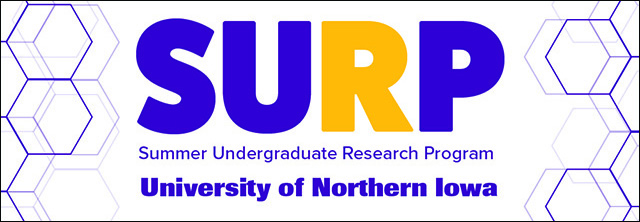
2023 Summer Undergraduate Research Program (SURP) Symposium
Location
ScholarSpace, Rod Library, University of Northern Iowa
Presentation Type
Open Access Poster Presentation
Document Type
poster
Keywords
DNA--Storage; DNA damage--Prevention; Bumblebees--Genetics;
Abstract
Deoxyribonucleic acid (DNA) is the foundation of an organism's ability to develop, survive, and reproduce. High genomic DNA is imperative for many scientific studies and applications such as Biotechnology, Genetics, & Pharmaceuticals. The separation of genomic DNA once purified from other cellular components (RNA, protein) can be sequenced to study entire genomes, develop antibodies, and limit genetic mutations.
Although a very stable molecule, DNA is susceptible to degradation under normal cellular conditions to various factors. Hence it is essential to properly extract genetic material from bee specimens, to better understand their population genetics.
DNA often needs to be stored for various lengths of time. To produce reliable and reproducible results, stability without contamination needs to be ensured to prevent degradation. In this study the goal is to show the stability & difference in quality and quantity of DNA purified from wild bees using the QIAGEN DNeasy® Blood & Tissue kit. We also compared the DNA concentration measured by NanoDrop and Qubit method, and used the RNAse digestion to test whether the presence of RNA contributes to the NanoDrop measurement.
We successfully extracted from a single bee using the QIAGEN extraction method. Using gel electrophoresis, We found bee DNA extracted in 2022 and kept as a solution showed higher levels of degradation than DNA preserved in the bee tissue and extracted shortly before the gel run. The overall Ribonucleic acid (RNA) detected in NanoDrop extracted DNA samples showed an increase in DNA concentration (ng/uL). Treatment of RNase decreased the measurement difference between the NanoDrop and Qubit measurements, although it also reduced the overall DNA yield. The proven stable method of DNA purification using the QIAGEN DNeasy® Blood & Tissue kit after prolonged storage is denoted here.
Start Date
28-7-2023 11:00 AM
End Date
28-7-2023 1:30 PM
Event Host
Summer Undergraduate Research Program, University of Northern Iowa
Faculty Advisor
Ai Wen
Department
Department of Biology
Copyright
©2023 Joel Lado and Dr. Ai Wen
File Format
application/pdf
Recommended Citation
Lado, Joel; Wen, Ai; and Elgersma, Kenneth, "Assessment of DNA Concentration and Degradation from Extracted Bumble Bee Thorax Muscle 2023" (2023). Summer Undergraduate Research Program (SURP) Symposium. 12.
https://scholarworks.uni.edu/surp/2023/all/12
Assessment of DNA Concentration and Degradation from Extracted Bumble Bee Thorax Muscle 2023
ScholarSpace, Rod Library, University of Northern Iowa
Deoxyribonucleic acid (DNA) is the foundation of an organism's ability to develop, survive, and reproduce. High genomic DNA is imperative for many scientific studies and applications such as Biotechnology, Genetics, & Pharmaceuticals. The separation of genomic DNA once purified from other cellular components (RNA, protein) can be sequenced to study entire genomes, develop antibodies, and limit genetic mutations.
Although a very stable molecule, DNA is susceptible to degradation under normal cellular conditions to various factors. Hence it is essential to properly extract genetic material from bee specimens, to better understand their population genetics.
DNA often needs to be stored for various lengths of time. To produce reliable and reproducible results, stability without contamination needs to be ensured to prevent degradation. In this study the goal is to show the stability & difference in quality and quantity of DNA purified from wild bees using the QIAGEN DNeasy® Blood & Tissue kit. We also compared the DNA concentration measured by NanoDrop and Qubit method, and used the RNAse digestion to test whether the presence of RNA contributes to the NanoDrop measurement.
We successfully extracted from a single bee using the QIAGEN extraction method. Using gel electrophoresis, We found bee DNA extracted in 2022 and kept as a solution showed higher levels of degradation than DNA preserved in the bee tissue and extracted shortly before the gel run. The overall Ribonucleic acid (RNA) detected in NanoDrop extracted DNA samples showed an increase in DNA concentration (ng/uL). Treatment of RNase decreased the measurement difference between the NanoDrop and Qubit measurements, although it also reduced the overall DNA yield. The proven stable method of DNA purification using the QIAGEN DNeasy® Blood & Tissue kit after prolonged storage is denoted here.


